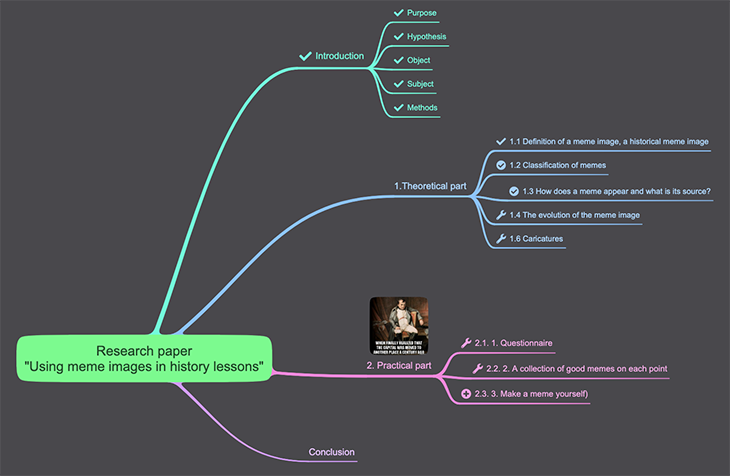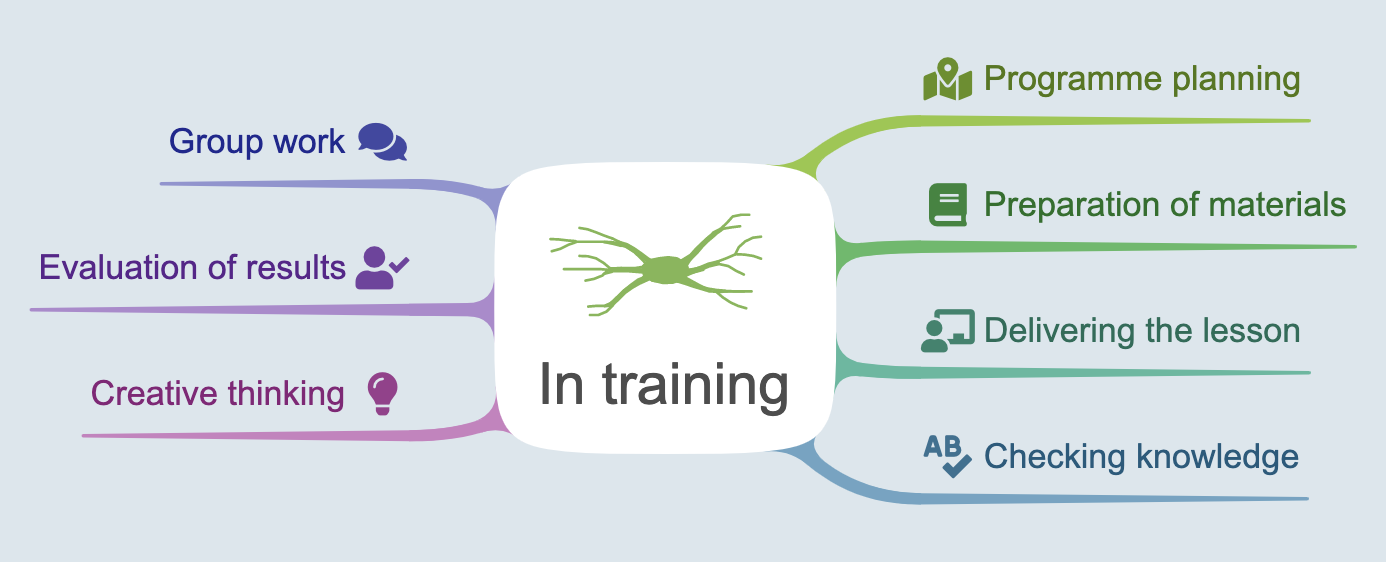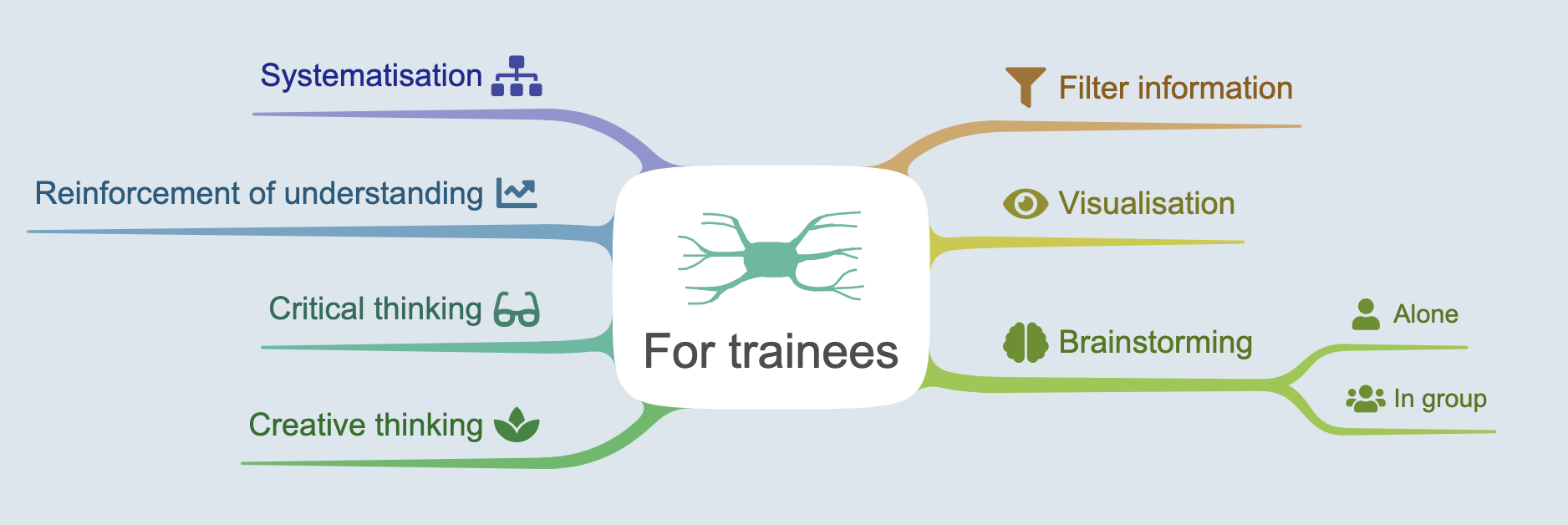19.01.2023
Education mind maps are an effective tool for teachers, coaches, trainers, and their students seeking to systematize a large body of information into an understandable and easily digestible form. Mapping helps users create and share visual representations of lessons, programs, and research.

Mindmapping in education is useful for a variety of tasks and can easily be adapted to the user's needs. As experts and teachers do not have much time to plan, prepare, and implement learning activities, it is important for them to present knowledge in an understandable way. Additionally, it is difficult for pupils and students to absorb the enormous amount of material in different areas, and reading and taking linear notes does not help everyone.
It is important to remember that people are mostly visual – more than 88% of the information we receive is through sight. There are also audials, kinesthetes, and digitals, but they are quite few. So, presenting information through a mix of words, images, and the connections between them means simplifying understanding as much as possible. Making learning engaging, comprehensible, and least energy-demanding is a major challenge in education.
Why experts and teachers use mind maps

- When planning the curriculum and syllabus, mind maps can help plan the academic year consistently, prioritizing key topics, and keeping track of the study schedule, adding tasks, marking passed topics, and deadlines for test work at all times.
- In preparation, mind maps can reduce notes and documents to clear, concise abstracts that can be understood instantly, and it's easy to develop lessons because all the notes, files, and even websites can be accessed from a single map.
- When conducting a lesson or workshop, mind maps are suitable for presenting the material being learned. The structure of the lesson will be visible to all participants, and comments and notes can be added during the lesson.
- When testing knowledge, mind maps can be used to create choice tests that turn quizzes into a fun journey through a web of questions and answers.
- In group work, mind maps are invaluable for group brainstorming, debates, or discussions.
- When assessing learning outcomes, mind maps can be used to celebrate student successes during the lesson and summarize group results.
- Creative thinking can be encouraged by allowing students to draw their own mind maps. This method increases creativity, helps students learn better, connects creativity with independent work, and allows for fun learning.
Mind mapping has been proven to help students understand and remember information more effectively than traditional teaching methods. If your students are struggling to understand complex topics, consider presenting the information to them in the form of a mind map. This structure makes it easier to make connections between different pieces of information, helping to formulate a full understanding of the topic.
Thanks to visual mind maps, you can create graphical presentations of information, making it more attractive and easier to understand. Upgrade your teaching methods with mind maps and see the difference it makes in your students' learning experience.
How mind maps help students

Mind maps are a powerful tool for students and pupils to improve their learning and understanding of complex topics. They offer a visual representation of information, making it easier for the brain to process and absorb. Here are some of the key benefits of using mind maps for education:
-
Filtering information: Mind maps allow students to organize and categorize information, making it easier to identify key concepts and ideas.
-
Visualizing learning topics: The use of images and colors in mind maps helps students to understand and remember information more effectively.
-
Brainstorming and group work: Mind maps are a great tool for brainstorming and group work, allowing students to share and develop ideas together.
-
Organizing notes: Mind maps provide a clear and concise way to organize notes, making it easy to find and reference information.
-
Improving reading comprehension: Mind maps help students to make connections between different pieces of information, improving their understanding of a topic.
-
Developing critical thinking skills: The process of creating a mind map helps students to think critically and creatively, making connections and drawing conclusions.
-
Enhancing understanding and memory: Mind maps help students to build a deeper and more complete understanding of a topic, making it easier to remember and recall information.
When students use mind maps, they can more easily absorb a large body of information. As the map is constructed, the brain is forced to make associations between fragments of seemingly disparate information. In the end, this helps students to build a clearer and more complete picture of the topic.
Overall, mind maps are a valuable tool for students to improve their learning and understanding. They offer a visual and interactive way to organize and present information, making it more engaging and memorable.

Mind maps are a great way to gather information about the topic being studied into one space. Students can better understand the topics they are learning because of the visual nature of mindmapping. Teachers and experts can create detailed lesson plans, present them from one central platform and share them easily with both colleagues and students.
And do you use mind maps in your education?
See also
How to make nice presentations even when you're not a designer?
Because a presentation is a way to present information clearly and convey your ideas to the audience. About a product, a service, a company. For explaining a process. For science or business. In any case, it is important that it was simple, beautiful and visual. The success of the presentation depends on it.
What are the main visualization features found in mind maps?
These are:
- Visual branch structure;
- Adding different icons;
- And inserting images;
- Drawing own icons.
IOctopus now has...

